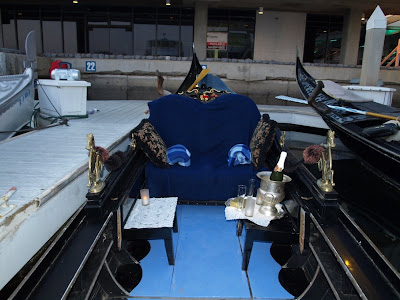 The first time I saw these guys, I was riding the vaporetto and this mascareta went by with a bunch of young guys in it.
The first time I saw these guys, I was riding the vaporetto and this mascareta went by with a bunch of young guys in it.I thought it was a rowing club, but they seemed a bit young, more like school-aged boys. I also noticed that they weren't wearing any recognizable club jerseys.
I snapped a few photos and forgot about it.
 Later on I took a better look at the digital images and knew that they were different from a rowing club. The lettering on the side of the boat said "Scuola Navale Militare Francesco Morosini"
Later on I took a better look at the digital images and knew that they were different from a rowing club. The lettering on the side of the boat said "Scuola Navale Militare Francesco Morosini"Born in 1961, the Scuola Navale Militare Francesco Morosini is part of the Italian Navy. The scuola began as a college, starting with a dedication to fostering an interest in life on the sea. In 1998 the institute became a military school.
The scuola is named in honor of Francesco Morosini – who was Venice’s Doge from 1619 to 1694. His family was one of the powerful Venetian nobility, which produced three other Doges as well.
 Two boats from the scuola rowing past the church of Santa Maria della Salute.
Two boats from the scuola rowing past the church of Santa Maria della Salute.After looking at all of the photos I have of these teams on their boats, I noticed that there's always a fifth guy sitting on the back - I'd guess that he's a higher ranking student who is there either to supervise or instruct.















































